Facelift
A facelift is a cosmetic surgery procedure designed to rejuvenate the appearance of the face and neck.

What is a Facelift?
A facelift is a cosmetic surgery procedure designed to rejuvenate the appearance of the face and neck. Referred to medically as rhytidectomy, a facelift addresses the signs of aging such as wrinkles, sagging skin and loose facial muscles by repositioning the facial tissues and trimming excess skin.
Advanced facelift methods include the SMAS facelift and the deep plane facelift. Depending on the patient’s needs, a different technique may be used to give the face a more refreshed and youthful appearance.
FAQ’s
How long can I expect my facelift to last?
Your lifestyle, genetics and the natural aging process will determine the longevity of your facelift. Typically, a person can expect results to last 10-15 years.
Can I combine a facelift with other facial enhancement procedures?
Yes, in fact it’s common to combine a facelift with other procedures such as a brow lift, eyelid surgery (blepharoplasty), neck lift, rhinoplasty, laser resurfacing and fat transfer.
What are the complications of a facelift?
Like with any surgery, a facelift may result in complications such as infection, bleeding, scarring, nerve damage and reaction to the anesthesia. It’s also possible to be dissatisfied with the results. For this reason it’s very important to choose a qualified and experienced surgeon.
We invite you to book a consultation with one of our expert plastic surgeons to find out if a facelift is right for you.

Facelift Quick Facts:
| Cost of Facelift | TBD |
|---|---|
| Duration of Surgery | 2-6 hours |
| Hospital Stay Required? | Yes |
| Stitches Removed | 5-7 days |
| Days of Social Downtime | 2-3 weeks |

After Surgery:
Downtime and recovery: Each person experiences the recovery period differently. Your unique healing journey will be based on what type of procedure you had and how well your body heals. Below are some general guidelines for what you can expect:
1 Day Post-Op: Swelling, bruising and pain are expected after a facelift and are most acute in the 48 hours. Your surgeon will provide pain medication to keep you comfortable. You will start to feel better after several days as the swelling and bruising will gradually start to subside. Avoid strenuous physical activity, bending over, lifting heavy objects or anything that can cause a spike in blood pressure.
1-4 Weeks Post-Op: You will wake up from surgery with dressings and possibly drains. These will be removed after one week. Your surgeon may use both dissolvable and non-dissolvable sutures. If non-dissolvable sutures are used, they will be removed within a week as well.
Make sure to get plenty of rest during the first week. Follow homecare instructions carefully to help you heal properly. You will have incision scars behind the ears and in the hairline. You can start using scar management products, such as creams or silicone sheets, to promote healing. Scars will be noticeable initially but will fade over time.
Long-term recovery:
Most of the swelling and bruising should subside within a few weeks. Keep in mind that it’s common to experience some loss of sensation, particularly at the incision sites. This normally improves over time. Be patient as it may take several months to see the full results of a facelift. With each passing month, you will notice a more rejuvenated appearance with improved facial contours and firmer skin.
How to Prepare for a Facelift
Do your research: A consultation and medical evaluation with a qualified Facial Surgeon is the first step in preparing for your facelift procedure. During your initial meeting you can discuss your aesthetic goals, which facelift technique is best suited for you, and whether your surgeon recommends any complementary procedures.
Quit smoking: If you’re a smoker it’s best to quit smoking at least six weeks in advance. Nicotine and other chemicals in tobacco can constrict blood vessels and impair your body’s ability to heal adequately post surgery.
What to Expect Before Surgery:
Follow pre-operative instructions: You will be provided with detailed pre-operative instructions by your surgeon. These may include avoiding medications that promote bleeding, making sure you have all the medications you’ll need post-operatively and when to stop eating and drinking the night before.
Arrange for help: You will need someone to pick you up from the clinic or hospital and take you home. Having someone nearby to help you with basic tasks and medications for the first few days to a week following surgery is recommended.
Plan for your recovery: You should designate a quiet, comfortable place for recovery after facelift, especially for the first few days and weeks. Expected recovery is normally 1-2 weeks; however, social downtime can be longer. Make sure to take adequate time off work or social engagements as necessary.
Why Have a Facelift?
Individuals may choose to undergo facial rejuvenation for the following personal and aesthetic reasons:

Look more youthful
The number one reason people get a facelift procedure is to address the visible signs of aging. A facelift can reverse these changes and restore facial structures, offering skin tightening and wrinkle reduction for a more youthful appearance.

Boost self-confidence
People may get a facelift to match their outward appearance with how they feel on the inside. Improving their appearance and looking more refreshed can have a positive impact on one's self-image

Career advantage
No matter the industry, looking youthful and energetic is advantageous. A person may choose to have a facelift to maintain a competitive advantage in the workplace and professional setting.
ELEGIBILITY The Ideal Candidate for a Facelift
The ideal candidate is someone in their 40’s, 50’s or older who is noticing signs of facial aging. They may have concerns such as sagging skin, jowls, deep wrinkles and nasolabial folds and loss of facial contouring, particularly in the lower face and neck area. Here are some other factors to consider:
Good overall health: A person should be in excellent health and a non-smoker. This includes having no serious physical conditions that could affect the outcome or be a contraindication to surgery and general anesthesia.
Sufficient skin elasticity: Facelifts are most successful when the skin has retained some degree of elasticity. In cases where skin elasticity is very poor, additional techniques may be used, such as skin tightening and fat grafting.
Have realistic expectations: A clear understanding of what can and cannot be achieved with a facelift can ensure that an individual is happy with the results. While it can provide significant improvement, a facelift won’t make someone look like they did in their 20’s or halt the natural aging process.
Be committed to recovery: Recovering from a facelift can take several months and sometimes even longer. Bruising and swelling can take months to fully subside, with final results visible after 6-12 months.





